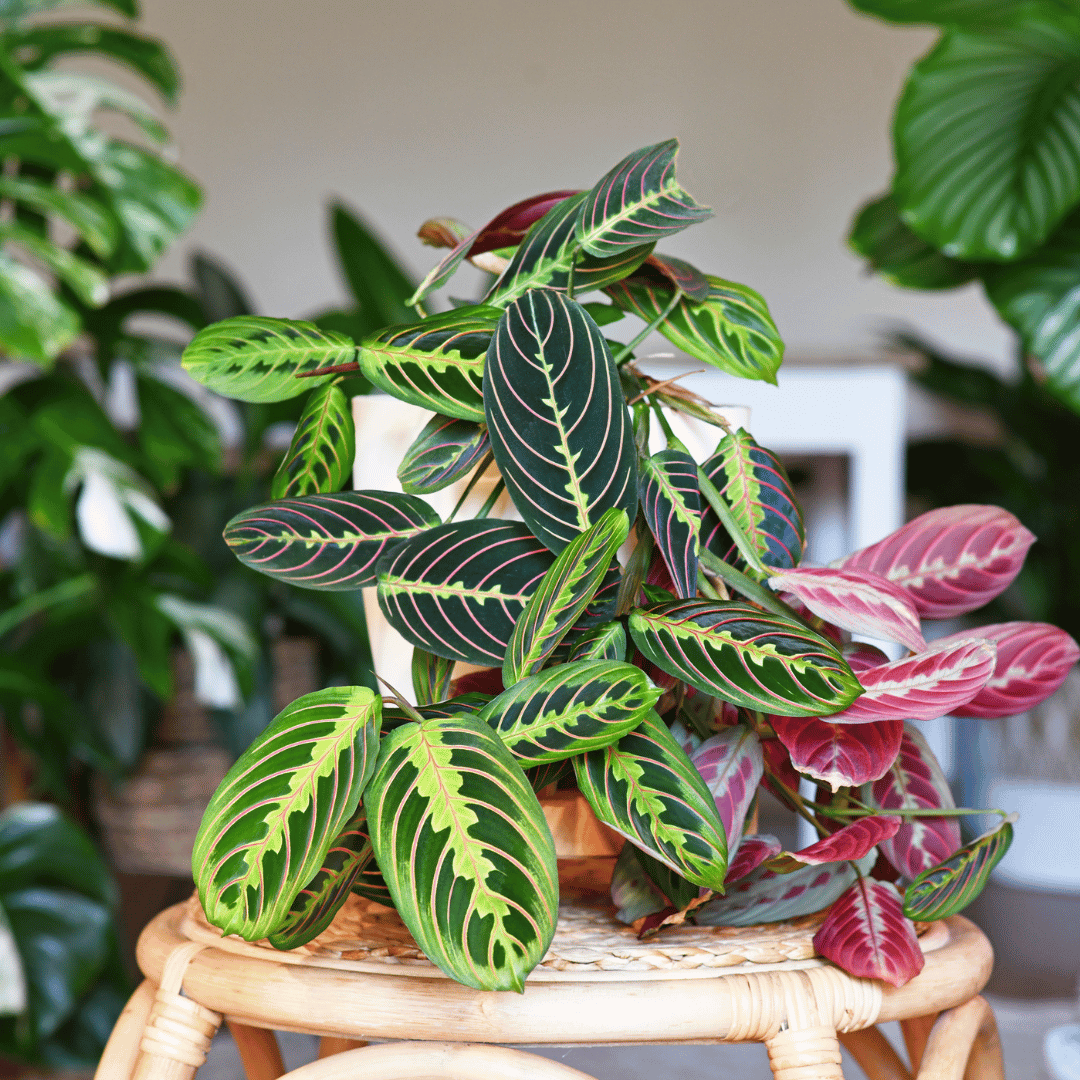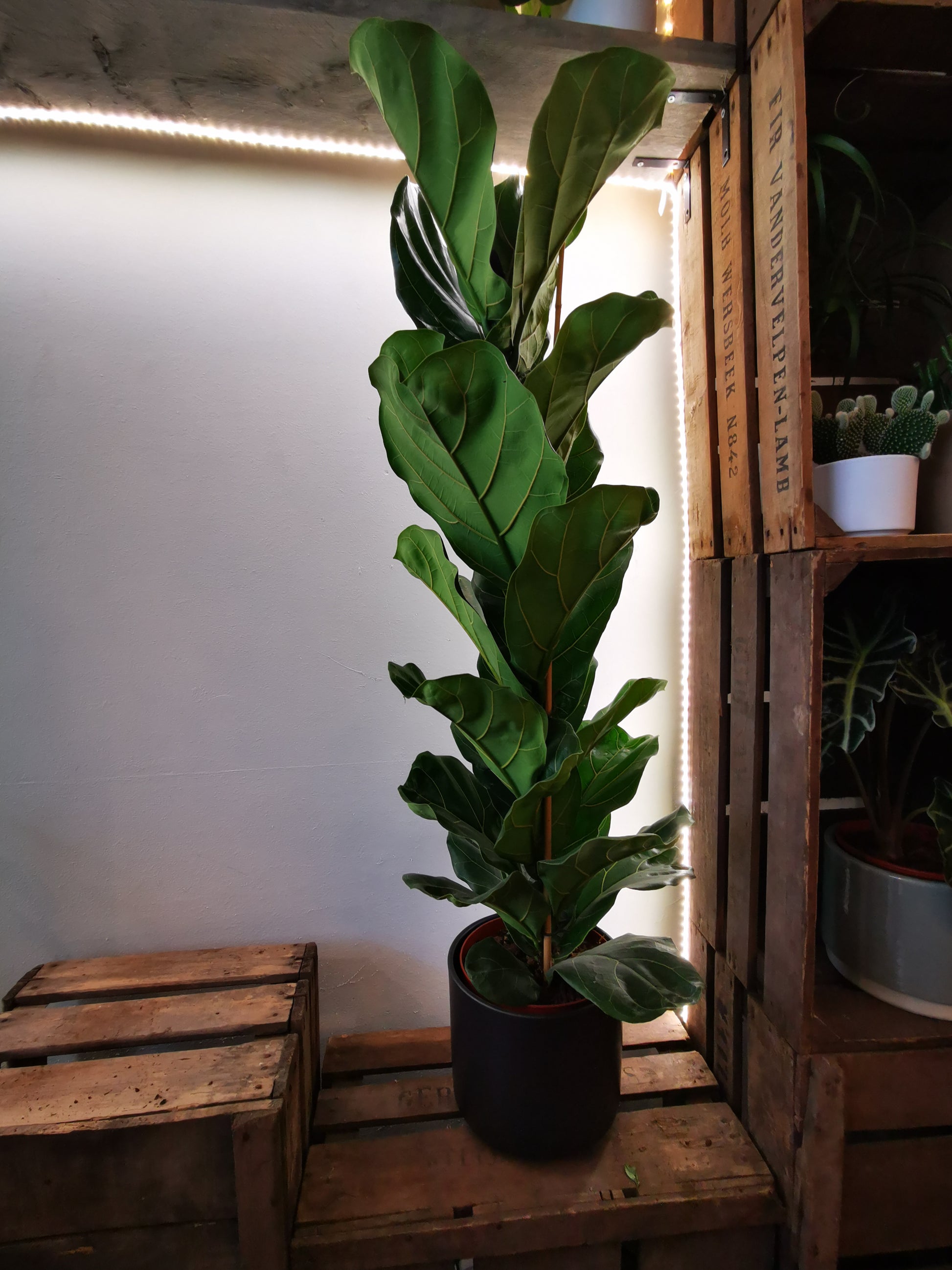Ficus Lyrata - Fiddle Leaf Plant
Ficus Lyrata - Fiddle Leaf Plant
Currently in stock
Rated 4.9 ⭐ by 100 satisfied customers on Google
Couldn't load pickup availability
- Home delivery throughout Belgium
- Pick up in Leuven possible
-
Lifelong help for all your plant questions
- Elegant and popular houseplant
- Easy to maintain
Ficus Lyrata: The Violin Plant
The Ficus Lyrata, often called the Violin Plant or Tobacco Plant, is known for its large, violin-shaped leaves. In its natural habitat, the plant can reach impressive heights of up to 20 meters. The plant is native to the rainforests of West Africa, a region that offers the specific growing conditions it needs. Unlike other ficus species , the Ficus Lyrata has fewer varieties due to its strict growing conditions and its reliance on a specific species of wasp for reproduction.
Growth and use of the Ficus Lyrata
The distinctive leaves of Ficus Lyrata not only serve as an ornamental feature, but also have practical uses. When dried, the leaves can be used as an outer layer for cigars, hence the name 'Tobacco Plant'. Despite its sky-high potential in the wild, the plant adapts well indoors, and given the right care and attention it is a pleasant and easy plant. No worries indoors it usually never grows taller than 2 meters.
Care and maintenance of the Ficus Lyrata
How much water does the ficus lyrata need?
Proper watering is essential for maintaining a healthy Ficus Lyrata. The plant likes a constantly moist soil, but does not tolerate waterlogging. Monitoring the soil moisture and adjusting the watering frequency is crucial, especially since the plant needs less water in winter than in summer. Signs of improper watering are visible on the leaves; yellowing and limpness indicate too much water, while brown spots, curling leaves and leaf loss indicate too little water.
Light and temperature requirements of the Ficus Lyrata
Ficus Lyrata thrives in well-lit areas but should be protected from direct sunlight to prevent leaf burn. Morning or evening sun is never a problem but midday sun in the summer months can sometimes be a bit much. Regular turning of the plant can help promote even growth as the plant tends to grow asymmetrically. This species likes higher humidity and should not be placed near draughts or heating sources as this can lead to brown edges on the leaves due to low humidity.
Repotting the Ficus Lyrata
Repotting and cutting tips for the ficus Lyrata
Repotting every two years into a slightly larger pot will support the growth and vitality of the Ficus Lyrata, using fresh soil to replenish nutrients. Choose a heavier pot to balance the potential height and weight of the plant and prevent it from toppling over due to asymmetrical growth. Patience is essential for propagation; cuttings must first develop roots in water before being placed in soil.
Pruning the Ficus Lyrata
Pruning is best done in the spring, which promotes a faster recovery time and fuller growth. Be careful when handling the plant during pruning, as the sap can cause skin irritation. Regular pruning not only helps maintain the desired shape, but also ensures that damaged or diseased foliage is removed.
Common pests and diseases of the Ficus Lyrata
The Ficus Lyrata is a strong plant with minimal susceptibility to diseases. However, infestations of spider mites and scale insects can occur. Using biological control measures, such as using our Jungle Mist Spray or natural enemies, effectively controls these pests without harsh chemicals.
Toxicity of the Ficus Lyrata
It is important to know that the sap of the Ficus Lyrata is poisonous if ingested and can cause skin irritation. Families with pets or small children should place the plant out of reach to prevent accidental exposure. Proper handling, such as wearing gloves while pruning, further reduces the risk of irritation.
Frequently asked questions about the Ficus Lyrata
How often should I water my Ficus Lyrata?
Watering should be adjusted to the season. Keep the soil moist in the summer and reduce the frequency in the winter to prevent root rot. Observing the condition of the leaves can help determine the correct amount of water. Normally this will be once a week during the spring and autumn. A little more during the summer months and easily a little less during the winter months.
What is the ideal location for an indoor Ficus Lyrata?
The plant should be placed in a bright spot with indirect sunlight, away from heat sources or drafts, which can weaken the leaves. Regularly turning the plant will also promote even growth.
Is it necessary to fertilize the Ficus Lyrata?
The Ficus Lyrata does not usually require regular fertilization. If the plant has not been repotted for a long time or shows signs of slow growth, a diluted universal plant food can be used sparingly to improve health.
Any questions about the Ficus Lyrata? Don't hesitate to send us a message and we will be happy to help you with all your plant questions.
Share

Frequently Asked Questions
How do you ship plants?
We always ship our plants well packaged and safely.
We do not ship on cold days and we also try not to ship during the weekends. This way plants are always in suboptimal conditions for a minimum time.
What is your shipping policy?
You can read our shipping policy here.
What payment methods do you accept?
We accept various payment methods online such as Bancontact, Visa, Mastercard, Paypal.
You can also pay with Ecocheques in our store in Leuven.
Can I return the products?
You can read our returns policy here.
Where do your plants come from?
Our plants always come straight from the grower to our shop. With minimal stops we prevent pests and diseases and keep the chain short!
Collections
-

Buy Maranta's
Discover the unique charm of our collection of Maranta plants. With their...
-

Buy Calathea
Are you looking for a beautiful and unique houseplant that will purify...
-

Accessories for Plant Lovers
In our store we have a wide variety of accessories to help...




